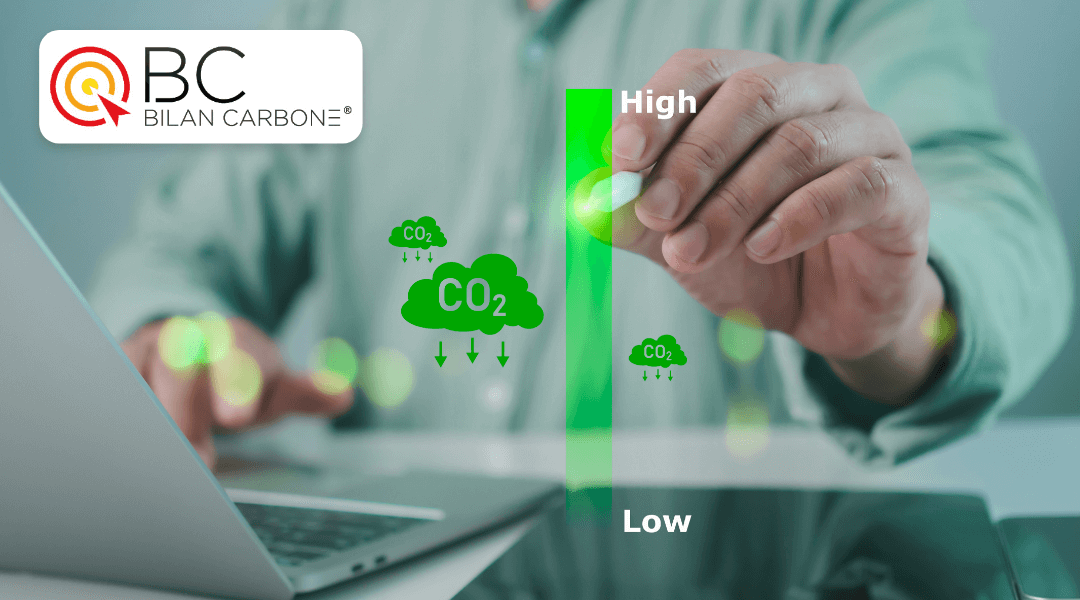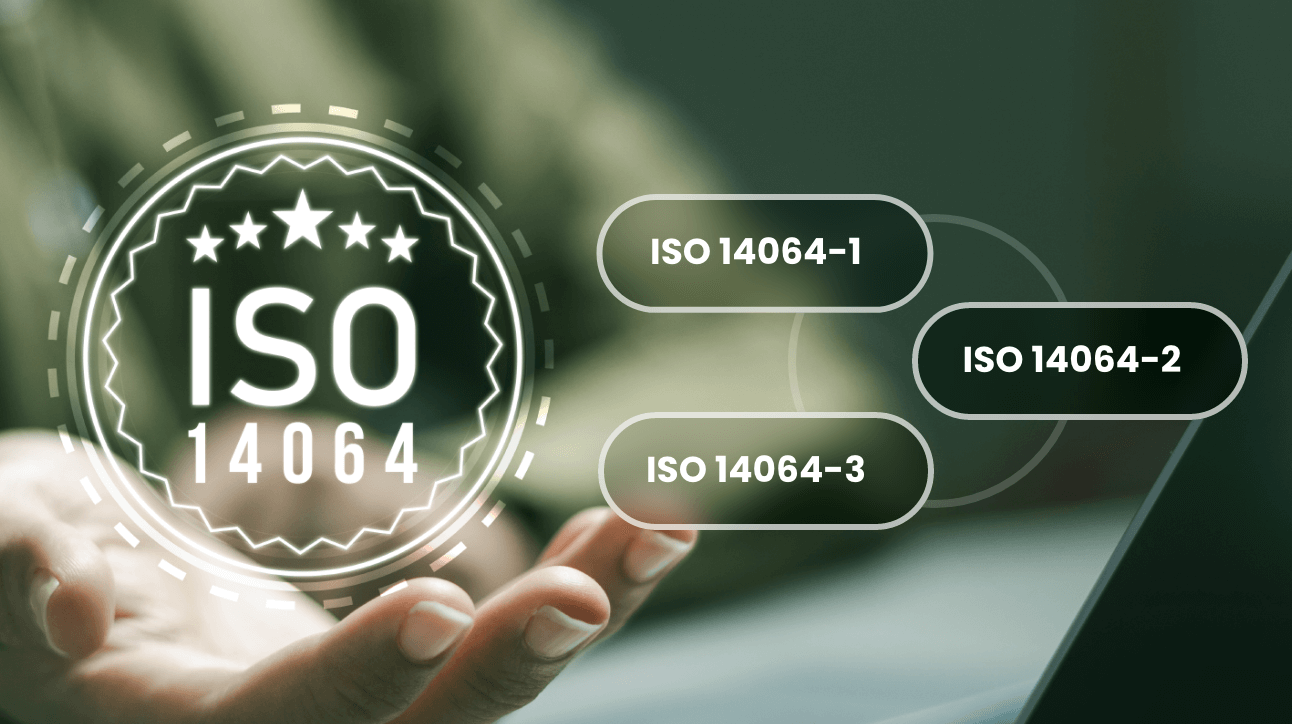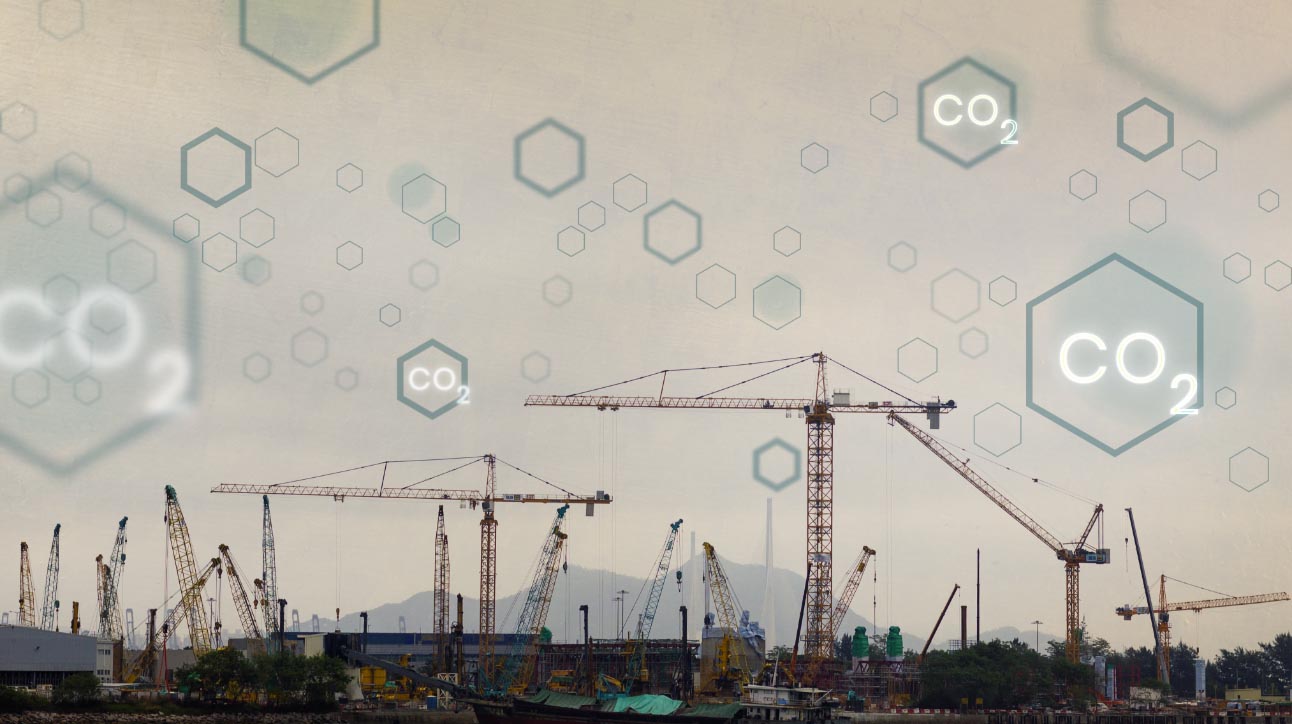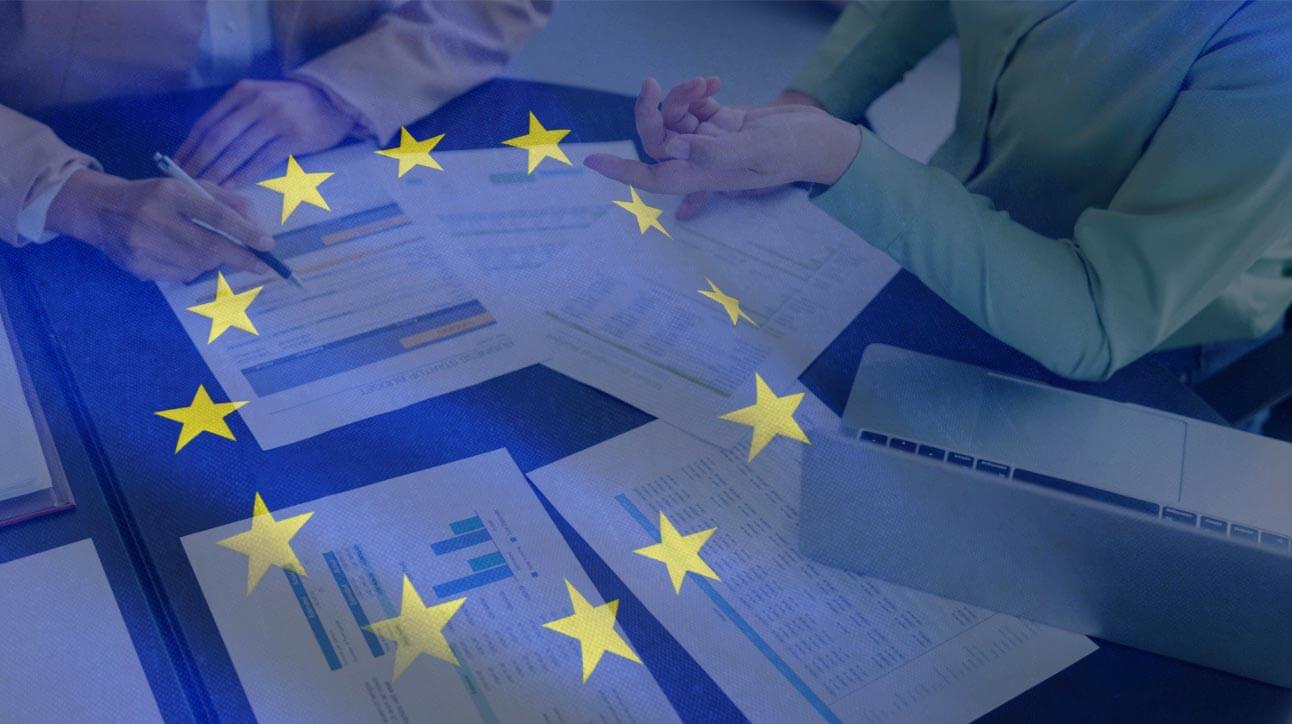The effects of climate change are here, and they’re thriving at our expense. We are beginning to feel the full weight of our actions, and global governing bodies are recognising the urgency to address this crisis. New frameworks are being developed and implemented to hold companies, institutions, and communities accountable, while encouraging proactive solutions for sustainability.
Whether it’s reducing carbon emissions or refining supply chain practices, every part of an operation has an impact. But how can companies accurately track and analyse their environmental footprint in a way that’s both comprehensive and actionable? To do this, many are turning to specialised tools and frameworks that help measure, manage, and reduce emissions across their activities — one such framework that has gained global recognition is Bilan Carbone.
What is Bilan Carbone?
Bilan Carbone is a registered method used to measure the greenhouse gas (GHG) emissions produced by an organisation, product, or individual. Created by the French Environment and Energy Management Agency (ADEME) in 2004, this approach aims to quantify emissions from various sources, including carbon dioxide (CO2), methane, and other potent gases like fluorinated compounds. It was officially managed by the Association Bilan Carbone (ABC) starting in 2011 and has become an important tool for assessing carbon footprints, especially in climate change and sustainability.
The Bilan Carbone method is under Bilan GES or BEGES, which stands for ‘Bilan des Émissions de Gaz à Effet de Serre’. It translates to a balance sheet of greenhouse gas emissions, the general term for the overall process of any kind of GHG emissions accounting or reporting in France.
The significance of Bilan Carbone lies in its ability to help businesses, local authorities, and even individuals identify their direct and indirect GHG emissions. Widely used in France, this tool is crucial for organisations, allowing them to create targeted plans for reducing their carbon emissions. It is heavily adapted to French regulatory requirements but is also aligned with other global frameworks and adaptable outside France. This helps entities integrate carbon reduction strategies and comply with international climate goals, such as the Paris Agreement. All this while elevating their environmental credibility and reducing their energy costs.
What is the difference between Bilan Carbone and GHG Protocol?
Understanding the differences between the Bilan Carbone and GHG Protocol can be challenging, as both terms relate to measuring greenhouse gas (GHG) emissions but approach it in slightly different ways. These differences are important for businesses and organisations choosing the best methodology for their sustainability goals. Below are some key distinctions between these frameworks:
Bilan Carbone vs. GHG Protocol
Bilan Carbone method requires companies to account for all emissions, including indirect greenhouse gas emissions apart from the ones listed in the Kyoto Protocol such as carbon monoxide and water vapor. In contrast, the GHG Protocol is an internationally recognised standard focusing only on the specific direct greenhouse gases under the Kyoto Protocol.
While GHG Protocol is known for its classification of emissions into its three-scope system, its reporting allows for some exclusion of activities in Scope 3, which covers all other emissions from supply chains not included in Scope 1 (direct emissions from owned or controlled sources) and Scope 2 (indirect emissions from purchased electricity and others). Bilan Carbone, on the other hand, requires keeping track of emissions across the entire value chain and product lifecycle. It also mandates the creation of an action plan for emission reductions, which is, for the GHG Protocol, only optional. This makes the Bilan Carbone methodology more comprehensive and potentially more complex, especially when keeping track of emissions across the entire value chain.
While GHG Protocol is an internationally recognised standard, Bilan Carbone is primarily used within the French regulatory framework and emphasises a comprehensive, national approach to carbon accounting.
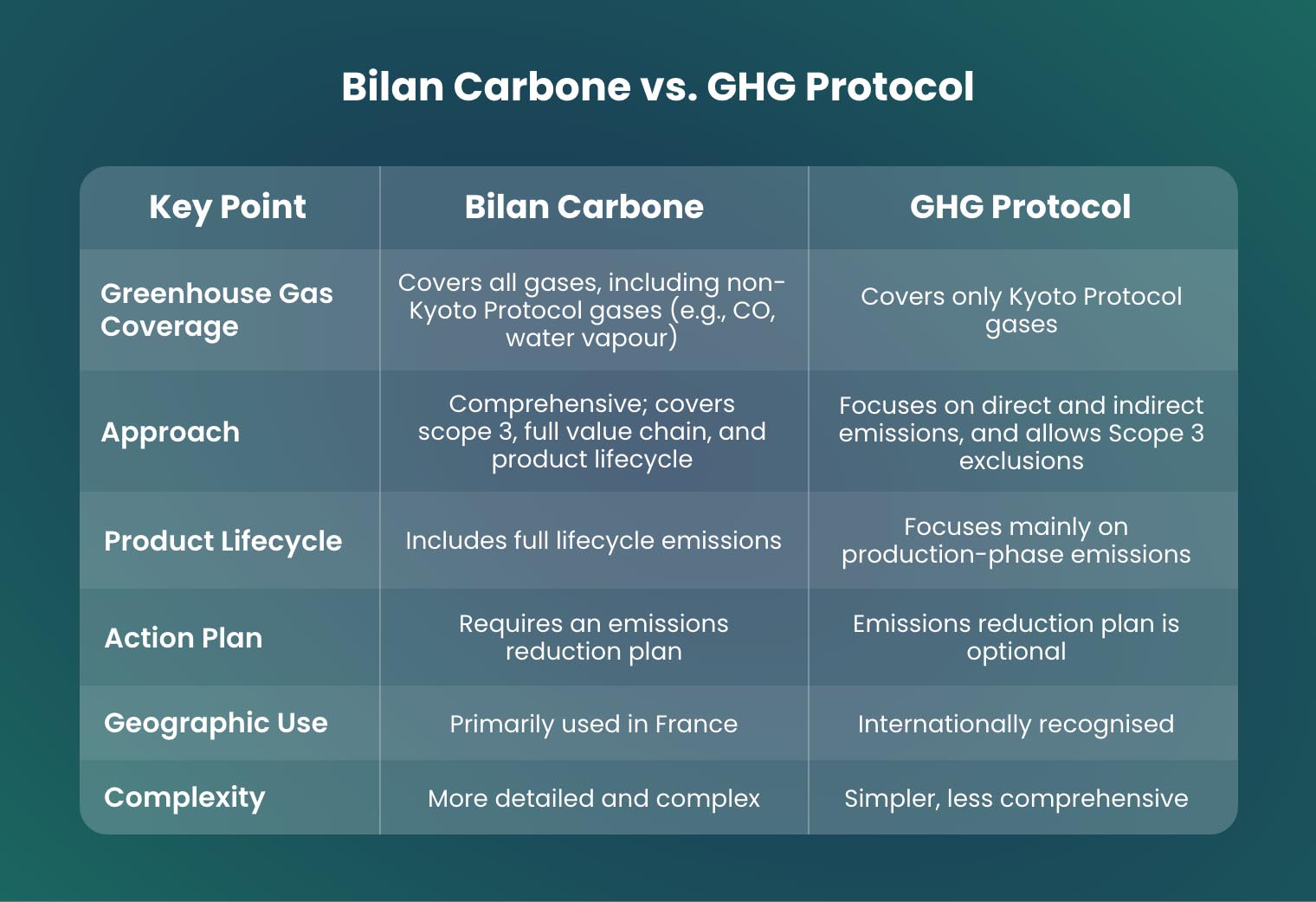
Carbon Footprint
Essentially, Bilan Carbone and the GHG Protocol are tools or frameworks that help organisations measure and track their carbon footprint. Carbon footprint generally refers to the total amount of greenhouse gases emitted from a specific activity, product, or organisation. This can include both direct emissions, like fuel consumption, and indirect emissions, such as those from purchased goods or services.
While Bilan Carbone and the GHG Protocol are used to quantify these emissions, carbon footprint is more of a broader term that describes the overall environmental impact of emissions, not tied to any specific framework.
Is the Bilan Carbone mandatory?
Bilan Carbone, specifically, is not mandatory, but it is highly recommended in France because of its detailed and inclusive approach. Organisations can also opt to use the framework if they are committed to developing a mandatory action plan for emissions reduction.
Given that, carbon reporting and auditing for certain organisations and businesses are considered mandatory. Companies may be compelled to carry out a carbon audit because of external pressures from investors, customers, and other stakeholders who increasingly demand transparency on sustainability. Apart from ensuring compliance with legal requirements, voluntary reporting can boost a company’s reputation, attract green investments, and mitigate the risks of “greenwashing” by showcasing credible, audited data.
Who is required to conduct carbon reporting?
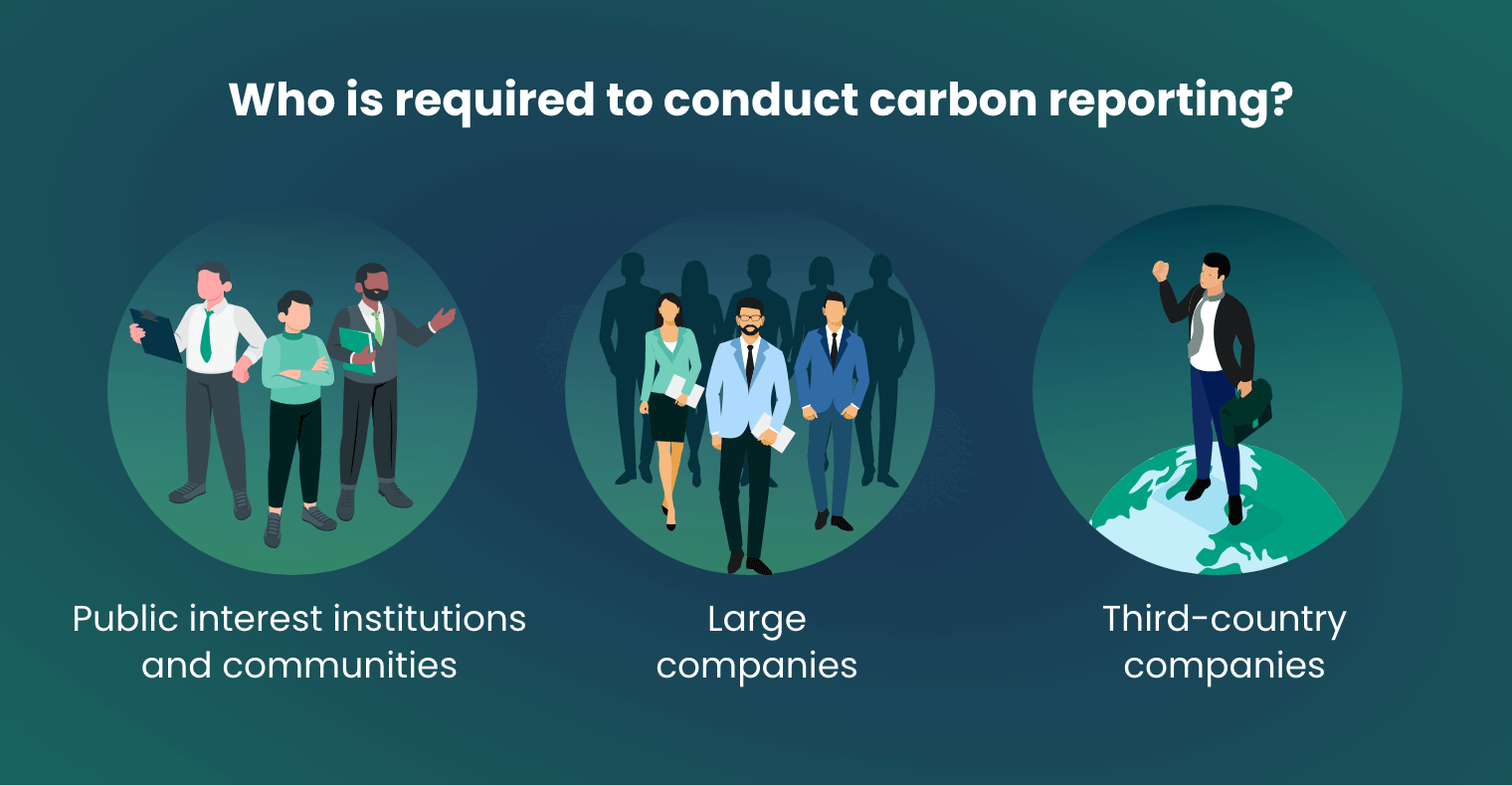
As regulations tighten and sustainability demands increase, the requirements for corporate carbon audits are growing. In the European Union (EU), several types of companies are obligated to perform these audits, with the Bilan Carbone method being one of the key approaches for environmental reporting compliance.
- Public interest institutions and communities: EU companies classified as public interest entities with more than 250 members and local communities with over 50,000 members must report their carbon emissions. They are already required under the Non-Financial Reporting Directive (NFRD) as well as part of the broader (Environmental, Social, Governance) ESG reporting under the new regulations.
- Large companies: The scope of mandatory carbon reporting under the Corporate Sustainability Reporting Directive (CSRD) extends to large businesses with over 500 employees or meeting certain financial thresholds — EUR 25 million in total assets. As for Article 75 of Grenelle II Law in France, companies with over 500 employees in the mainland or 250 employees in overseas regions must complete a Bilan GES like Bilan Carbone.
- Third-country companies: Although third-country companies will have the option to opt out of mandatory reporting until 2028, it is strongly encouraged for them to start tracking and reporting their carbon emissions to stay ahead of regulatory trends
What emissions are assessed in Bilan Carbone?
Understanding what emissions are included in this methodology is crucial for accurately measuring a company’s carbon footprint. Here’s an overview of the emissions covered by Bilan Carbone, which shares some compatibility with GHG Protocol but with added factors:
Scope 1 or Direct Emissions
Scope 1 emissions cover the direct emissions from sources that are owned or controlled by the company. This includes emissions from fuel combustion in company vehicles, heating systems, and any emissions from industrial processes or operations that the company directly controls. For example, if a company burns fossil fuels for energy or transportation, those emissions are counted under Scope 1.
Scope 2 or Indirect Emissions
Scope 2 includes emissions from the generation of purchased electricity, steam, heating, or cooling consumed by the company. These indirect emissions occur off-site but are directly tied to the company’s energy use. For instance, if a company uses electricity generated from coal-fired power plants, the emissions from that electricity generation are accounted for under Scope 2.
Scope 3 or Other Emissions
Scope 3 is the most comprehensive and covers all other indirect emissions not included in Scope 2. This includes emissions from the entire value chain, such as the production of raw materials, transportation of goods, employee commuting, product use, and disposal. It also accounts for emissions from travels, outsourced activities, and waste management from operations, making it essential for a full life cycle assessment of a company’s carbon footprint.
Greenhouse Gases Included
The Bilan Carbone methodology considers a wide range of greenhouse gases that contribute to global warming, including carbon dioxide (CO2), methane (CH4), nitrous oxide (N2O), and fluorinated gases like hydrofluorocarbons (HFCs), perfluorocarbons (PFCs), sulphur hexafluoride (SF6), and can also include additional indirect gases in other circumstances. These gases are expressed in terms of CO2 equivalent to provide a common metric for comparison.
What are the Bilan Carbone requirements?
The Bilan Carbone methodology has specific requirements that organisations must follow to make sure the assessment of their greenhouse gas emissions is comprehensive and accurate. These requirements guide companies in collecting data, calculating emissions, and creating actionable plans for carbon reduction.
- Comprehensive data collection: Companies must collect data on all relevant emissions sources, including direct emissions from operations and indirect emissions from energy and transportation. This guarantees no major emissions source is overlooked in the assessment process.
- Consideration of emission categories: Emissions must be categorised into three scopes. Each scope has specific data collection and measurement requirements for accurate reporting.
- Clear and consistent documentation: Clear documentation of data sources and calculations ensures transparency and accuracy in the carbon footprint analysis report. This helps stakeholders verify emissions data and supports informed decision-making.
- Periodic updates and accountability: Regular updates, typically annual, are recommended to track emissions reductions and further refine strategies. In some jurisdictions, like France, companies must follow specific reporting guidelines, including publishing their findings on a dedicated platform to make sure there is accountability and compliance with regulations.
How To Calculate a Company’s Bilan Carbone

Calculating a company’s carbon footprint using the Bilan Carbone method involves several steps, from data collection to emission reduction planning. Here’s a simplified breakdown of the key stages in the calculation process:
- Engage the sustainability team: The first step is to get the sustainability team involved from the start. By engaging them, along with other stakeholders, throughout the entire process — from planning to reporting — there is a guarantee for proper alignment and coordination for the next steps. Holding educational briefings and discussions allows for inputs and collaboration that will strengthen the overall carbon assessment process.
- Gather activity data: Once the project lead is in place, the company needs to map out all the energy streams and materials used in its operations. This includes electricity consumption, fuel use, transport logistics, raw material procurement, and waste disposal. Each activity is categorised to determine which emissions should be accounted for in Scope 1, 2, or 3.
- Apply emission factors: The company conducts carbon accounting by converting the activity data into carbon emissions using emission factors. These are values that quantify the CO2 equivalent emitted per unit of activity. By multiplying activity data by the relevant emission factor, the company can calculate the total emissions for each category.
- Identify key emission sources: After calculating the emissions, the company should group them by category to identify the most significant sources of GHGs. This step helps prioritise areas for improvement and allows the company to focus its emission reduction efforts where it will have the greatest impact.
- Develop a report and an action plan: The final step is to create a comprehensive ESG report of the carbon assessments and results, along with a clear carbon reduction action plan. This plan should outline strategies to mitigate emissions and include key performance indicators (KPIs) to track progress. Integrating ESG reporting into the plan allows transparency and helps communicate progress to stakeholders, aligning efforts with broader sustainability goals.
What are the challenges in conducting a Bilan Carbone?
Conducting a Bilan Carbone assessment presents several challenges for businesses, ranging from data collection to regulatory compliance. While the methodology is structured in its own way, the complexity of it lies in accurately gathering and analysing data, collaborating with suppliers, and dealing with varying standards and reporting requirements. Below are some of the key challenges companies face during this process.
Data Collection and Availability
One of the biggest hurdles is collecting accurate data across the organisation. Data sources may be spread across various departments, and some emissions data, such as that from suppliers or product use, may not be readily available. Suppliers may not have detailed carbon information or may lack the capacity to track their emissions. Without reliable data, it becomes difficult to create an accurate carbon footprint analysis, and companies may have to rely on estimates, which reduce precision.
Standardisation Issues
A lack of standardisation in how carbon emissions are calculated and reported can lead to inconsistencies with results. Different frameworks and emission factors are used across industries, which makes comparisons difficult. Regulations, such as the EU’s CSRD or France’s BEGES, require businesses to report their emissions in a standardised way, which can be challenging if the company’s data is incomplete or inconsistent. Staying up-to-date with evolving regulations and aligning their Bilan Carbone assessment with internationally recognised standards ensures consistency and compliance.
Time and Resource Constraints
Conducting a thorough Bilan Carbone assessment requires considerable time and resources, particularly for companies with large, complex operations. The process involves coordination between multiple departments and may require external expertise, which can be costly and resource-intensive. Smaller businesses may struggle with the manpower and budget required for an accurate assessment.
What are some carbon reduction strategies that businesses can implement?
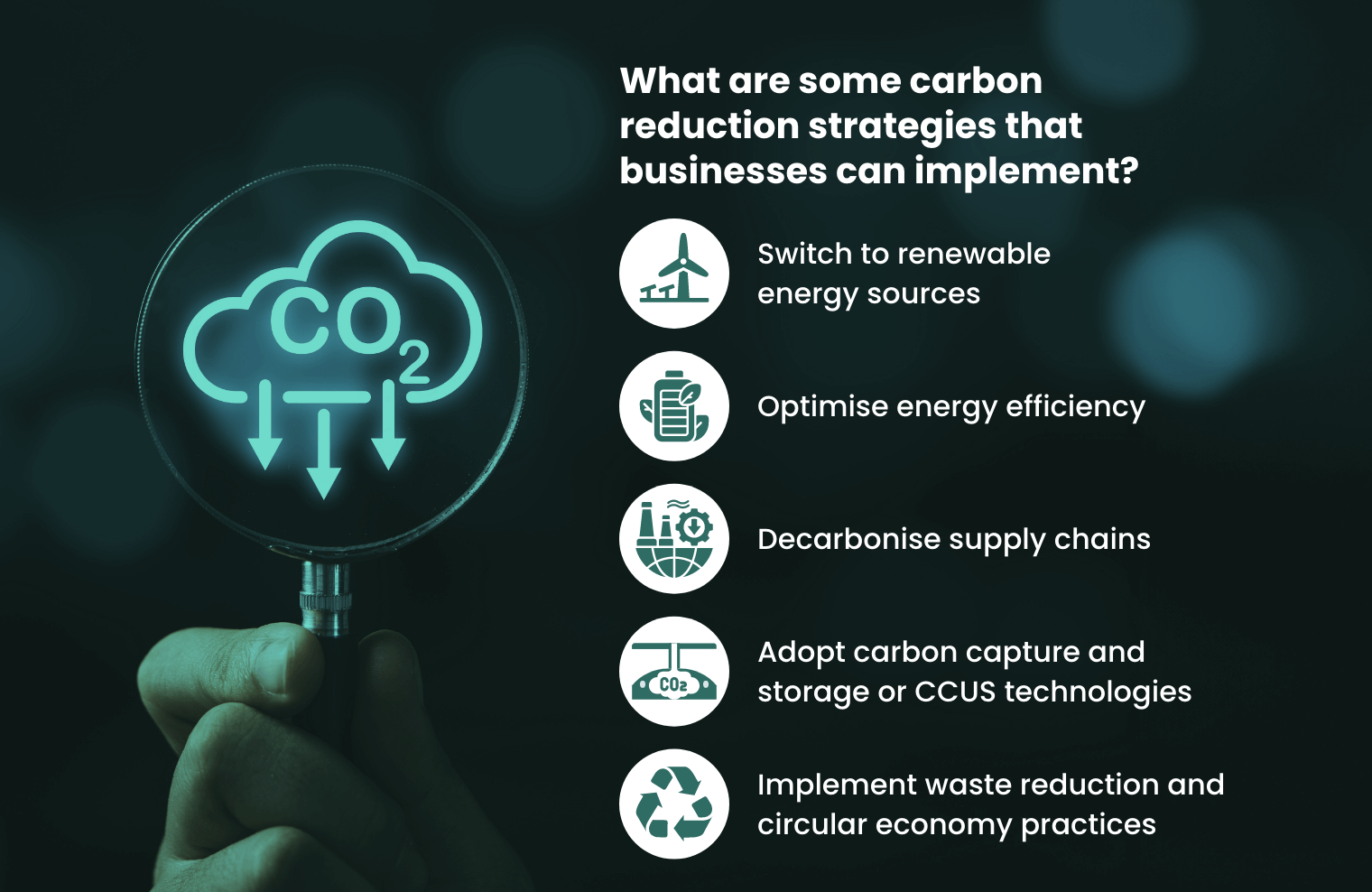
Reducing a company’s carbon footprint achieves carbon neutrality and involves a variety of strategies. Below are some key tactics on how to reduce the carbon footprint that businesses can implement:
- Switch to renewable energy sources: Investing in wind, solar, and hydroelectric power reduces reliance on fossil fuels and lowers emissions. These clean energy sources provide long-term, sustainable energy and align with the growing market demand for green technologies.
- Optimise energy efficiency: Implementing energy-saving practices like LED lighting, better insulation, and efficient machinery helps lower operational costs and emissions. Smart systems and energy-efficient equipment also improve sustainability.
- Decarbonise supply chains: Collaborating with suppliers to reduce emissions by choosing low-carbon options and optimising logistics can significantly lower a company’s carbon footprint. Sustainable material sourcing and carbon data sharing with suppliers help drive joint emission reductions.
- Adopt carbon capture and storage or CCUS technologies: CCUS technologies capture and store CO2 emissions, reducing direct emissions from industries with high carbon output. This strategy supports climate change mitigation by repurposing or storing CO2 underground.
- Implement waste reduction and circular economy practices: Reducing production waste, reusing materials, and recycling cuts emissions tied to waste disposal. Adopting the 6 Rs (Refuse, Reduce, Reuse, Recycle, Rethink, Repair) encourages sustainability and reduces carbon emissions across the supply chain.
Streamline Your Carbon Reporting with ESG Software

Navigating the complexities of carbon reporting, whether your business will use Bilan Carbone or other calculation methods, can seem tough at the start. ESG reporting software simplifies this process of calculation requiring careful tracking of emissions across multiple scopes and a deep understanding of industry standards. It further improves sustainability goals in the long run.
With a carbon calculator feature that follows global and industry standards, Convene ESG is an ESG software that removes the complexities of carbon reporting. It has automated data workflows, customisable templates, and expert-backed recommendations that easily facilitate the collection, carbon footprint analysis, and reporting of emissions data. This ESG reporting software helps companies gain a clear overview of their environmental impact, creating impactful reports that reflect a true commitment to the environment and overall sustainability. Convene ESG guarantees that your carbon reporting is accurate, efficient, and fully compliant.
Ready to take control of your emissions and reporting? Schedule a demo today!
